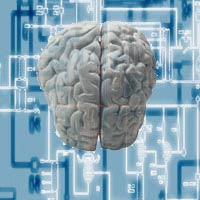from article:
• During the Neolithic, population density increased from 10 to 50-fold over the Paleolithic, supported by the spread of grain-farming. Angel estimates meat consumption fell to 10-20% of the Paleolithic level with this transition in subsistence.
This is an example of faulty reasoning because the causal aspects of why are not addressed. Nor the causal impetus for the transition.
The reasons are well understood and focus on over hunting. Many species such as in Australia are hunted into extinction by humans using wasteful but effective methods like prairie fire to make large kills. Over hunting leads to famine and this cycle is repeated so often it is the rule rather than the exception even today.
All attempts at regulation are met with resistance and still are but also the reasons for controlling hunting grounds are not generally understood, as classes of first sedentary, then "urbanized" populations develop away from understanding the relationship to the land.
The second reasons besides that for limiting the hunting efficiency is territorial competition as the hunter clans are successful they over exploit a region and then go into competition with neighboring clans, combined this competition builds to a "peak resource" exploitation curve that produces catastrophic competition in the form of warfare and the populations self regulate through generalized Darwinian murder.
The very first rule of the paleo diet is
that which does not kill makes you strong. If it tries to kill you then you kill it and eat it first. This is a warriors "creed" and the reason that ritual eating of large carnivore meat is still practiced even though the quality of that meat is the poorest. But it is also why token toxins are consumed that stress the immune system and can result in stronger metabolisms (if you survive).
Besides the blood, bone, and gristle which were also mainstays of classic paleo diets there were also roots and grubs. If it crawled and looked juicy like a grasshopper or a big worm it was eaten. Some of these are still consumed today (escargot, grasshoppers, crayfish, and meal worms). To be the top of the food chain you must consume all that you encounter. Hunter warrior clans didn't just eat the catch, they ate the bait too.
Now an interesting thing about the hunter strategies not addressed in the biased article above is that it ignores some very controversial aspects of the fossil record that show that neolithic hunter practices nearly wiped out humans completely at the beginning of Cro Magnon resulting in as few as two thousands individuals globally to whom we are all related. That is also a reason for the close genetics between all humans. This is seen as possibly the result of the outline I described above combined with some aspect of climactic collapse associated with the ice age but the end result was that humanity is nearly driven to extinction and through a combination of sedentary and hunting techniques early villages are formed and the general population makes a come back in neolithic times.
After sedentary and hunter gatherers begin to coexist a different dynamic for resource competition comes into play involving trade and exchange of resources that is seen in examples like the Mongols, Huns, and others interacting and preserving their cultures in hard times as "migrant workers" for larger established states. A real problem with any of this is that people color all their perspective of the past with their personal mythologies, their values of what should be "right".
Jace, Peter AND Reason make very valid points IMO and I would add to Jace's argument that the balance of diet and exercise is far more important than you are treating. This isn't about just the amount, or quality of the calories (though these are very important) it is also about the character and quantity of physical labor.
These hunter warriors slept shortly after dark, kept sentry duty but awoke well before dawn into a day of non stop intense physical labor. Preparing for hauling or hunting and running dozens of miles everyday with a full pack. When not hunting they were hauling, trapping, patrolling, preparing for the hunt and war, or involved in combat or the butchery of the kill.
We still practice a "three meals a day" regimen for example handed down to us from sedentary farming and hard labor, as well as a work day around sunlight (actually built into our genes) that are not appropriate to the urban culture that we are building and some people are already mutated to adapt to the newer system while others are literally not physically or mentally prepared for such a transition.
The hunters probably had a different system more like soldiers on the march, a hearty but not too great breakfast, grazing at strategic intervals, a resting meal in the mid day sun and then a round off meal at dusk of wet stew or soups. Liquids in this life were as, if not "more" important than protein, also the importance of electrolyte balance cannot be underestimated as their needs would parallel intense athletic demand.
As we understand this better we will be able to tailor our metabolisms better to meet our needs and design appropriate diet/exercise regimens to meet our real physical characteristics. There's no single optimal program, there are a variety of methods for optimizing a program to fit individual demand. A bricklayer doesn't require the same things as bureaucrat, or a child as an adult.
This is where the questions of habit and perceptions of equality are important as ideas of economic class cloud the reality that poor people actually eat better in many respects than the rich and comfort is still a psychological aspect of diet.

















































